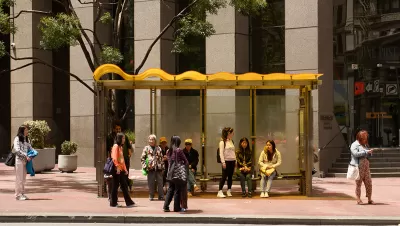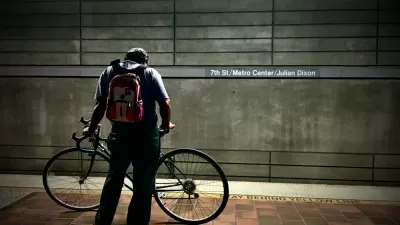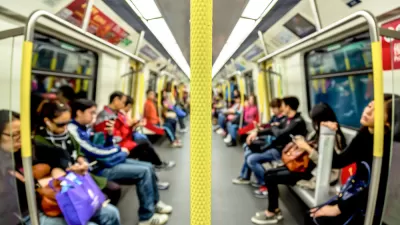This short new publication by the Institute of Transportation Engineers provides an overview of key transportation equity concepts and describes practical ways to incorporate equity analysis into planning.

Social equity (also called fairness and justice) refers to the distribution of benefits and costs in society and the degree to which it is considered appropriate. Transportation planning decisions have significant equity impacts. They affect the allocation of valuable public resources and impact people’s quality of life and economic opportunities.
This is a timely issue. With most communities wanting to become more equitable, practitioners have a responsibility to consider equity in their analysis. In the past, transportation system performance was evaluated based primarily on travel speeds, which favored faster but more costly modes such as driving over slower but more affordable modes with lower external costs such as walking, bicycling, and public transit. Equity received little consideration. In recent years, major transportation organizations including the Institute of Transportation Engineers and the Transportation Research Board have made commitments to social equity and justice.
However, equity analysis can be challenging. A particular policy or planning decision may seem equitable if evaluated using one set of definitions and metrics, but not if evaluated using others.
This new three-page "quickbite" publication authored by Todd Litman provides an overview of key transportation equity concepts and describes practical ways to incorporate equity analysis into planning. It summarizes a more comprehensive report on the subject.
Comprehensive equity analysis is multifaceted; it considers various equity types, impacts, metrics, and groups. Horizontal equity assumes that people with similar needs and abilities should be treated similarly. Vertical equity assumes that disadvantaged people should receive favorable treatment. Comprehensive transportation equity analysis considers the following five categories:
- A fair share of resources (also called fairness or equality). It implies that people should “get what they pay for and pay for what they get,” unless subsidies are specifically justified.
- External costs. Costs that travel activities impose on other people, such as delays, risk, and pollution, are unfair. Fairness requires minimizing or compensating for such impacts.
- Inclusivity - vertical equity with regard to need and ability. This considers how transportation systems serve people with disabilities, youths and seniors, and other special mobility needs. This justifies multimodal planning and universal design requirements.
- Affordability - vertical equity with regard to income. This considers how transportation systems affect lower-income people. Policies that favor lower-income people are called progressive and those that favor higher-income people are called regressive. This justifies policies that improve affordable modes and subsidize low-income travelers.
- Social justice. This considers how transportation systems serve disadvantaged and underserved groups, and address structural injustices such as racism and sexism.
This is an opportunity for planners. More comprehensive equity analysis allows transportation policy and planning decisions to better respond to community needs and values.
FULL STORY: Evaluating Transportation Equity: ITE Quickbite

Planetizen Federal Action Tracker
A weekly monitor of how Trump’s orders and actions are impacting planners and planning in America.

Map: Where Senate Republicans Want to Sell Your Public Lands
For public land advocates, the Senate Republicans’ proposal to sell millions of acres of public land in the West is “the biggest fight of their careers.”

Restaurant Patios Were a Pandemic Win — Why Were They so Hard to Keep?
Social distancing requirements and changes in travel patterns prompted cities to pilot new uses for street and sidewalk space. Then it got complicated.

Albuquerque Route 66 Motels Become Affordable Housing
A $4 million city fund is incentivizing developers to breathe new life into derelict midcentury motels.

DC Area County Eliminates Bus Fares
Montgomery County joins a growing trend of making transit free.

Platform Pilsner: Vancouver Transit Agency Releases... a Beer?
TransLink will receive a portion of every sale of the four-pack.
Urban Design for Planners 1: Software Tools
This six-course series explores essential urban design concepts using open source software and equips planners with the tools they need to participate fully in the urban design process.
Planning for Universal Design
Learn the tools for implementing Universal Design in planning regulations.
Heyer Gruel & Associates PA
JM Goldson LLC
Custer County Colorado
City of Camden Redevelopment Agency
City of Astoria
Transportation Research & Education Center (TREC) at Portland State University
Camden Redevelopment Agency
City of Claremont
Municipality of Princeton (NJ)





























